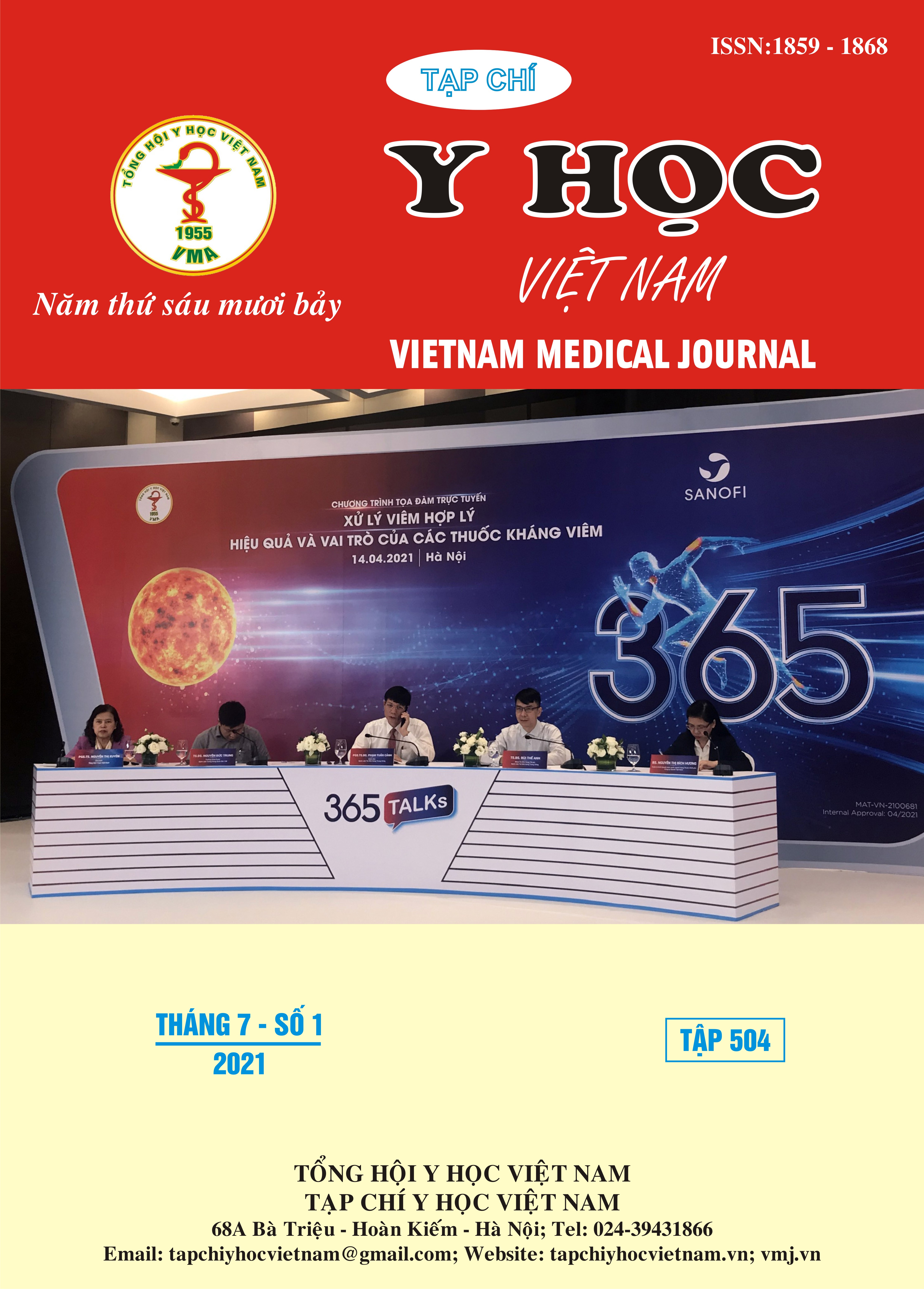ĐỘ CỨNG VICKERS VÀ CẤU TRÚC BỀ MẶT SỨ LITHIUM DISILICATE TRƯỚC VÀ SAU XỬ LÝ AXIT HYDROFLUORIC
Nội dung chính của bài viết
Tóm tắt
Mục tiêu: Nghiên cứu đánh giá độ cứng Vickers và cấu trúc bề mặt của sứ thuỷ tinh lithium disilicate trước và sau khi xử lý với axit hydrofluoric (HF) 5%. Đối tượng và phương pháp nghiên cứu: 52 đĩa tròn sứ thuỷ tinh lithium disilicate (26 đĩa sứ GC Initial Lisi Press-LP và 26 đĩa sứ IPS e.max Press-EP) có kích thước 4x2mm được chuẩn bị bằng kỹ thuật ép nóng. Sau khi đánh bóng bề mặt, một nửa số đĩa sứ được xử lý bề mặt với HF 5%. Sau đó, 40 đĩa sứ được dùng để đánh giá độ cứng Vickers và 12 đĩa dùng để quan sát bề mặt dưới kính hiển vi điện tử quét. Kết quả: Sau khi xử lý bề mặt với HF 5%, độ cứng Vickers của 2 nhóm nghiên cứu đều giảm có ý nghĩa thống kê và nhóm LP có độ cứng Vickers lớn hơn có ý nghĩa thống kê so với nhóm EP. Hình ảnh SEM cho thấy cấu trúc bề mặt của nhóm LP có các tinh thể với kích thước nhỏ, đều hơn so với nhóm EP. Kết luận: Việc xử lý với HF 5% làm giảm độ cứng bề mặt của sứ lithium disilicate và độ cứng của LP lớn hơn EP.
Chi tiết bài viết
Từ khóa
Độ cứng Vickers, kính hiển vi điện tử quét, sứ lithium disilicate, axit hydrofluoric
Tài liệu tham khảo
2. Xiaoping L, Dongfeng R, Silikas N . (2014). "Effect of etching time and resin bond on the flexural strength of IPS e.max Press glass ceramic". Dental Materials. 30 (12), pp. e330-e336.
3. Kurian BP, Johns M, Hareesh MT. (2018). "Lithium Disilicate Ceramic – An Overview". The Journal of Prosthetic and Implant Dentistry. 1 (2)
4. Carrabba M. et al. (2017). "Flexural strength of CAD/CAM and pressed novel lithium disilicate". Journal Of Oral and Craniofacial Biomaterials Sciences. 33, pp. e16.
5. Prochnow C, Venturini A B, Grasel R, Gundel A, Bottino M C, Valandro L F. (2018), "Adhesion to a Lithium Disilicate Glass Ceramic Etched with Hydrofluoric Acid at Distinct Concentrations". Brazilian Dental Journal. 29 (5), pp. 492-499.
6. Kalavacharla V K, Lawson N C, Ramp L C, Burgess J O. (2015), "Influence of Etching Protocol and Silane Treatment with a Universal Adhesive on Lithium Disilicate Bond Strength". Oper Dent. 40 (4), pp. 372-378.
7.Sakaguchi R. et al. (2011). Craig's Restorative Dental Materials, 13th Edition -Mosby (2011), Vol. 11.
8. Rawls KJ: Mechanical properties of dental materials In Anusavice KJ (ed): Phillips’ Science of Dental Materials (ed 11). St. Louis, W.B. Saunders, 2003, pp. 69-143
9. Hallmann L, Ulmer P, Gerngross MD, Jetter J, Mintrone M, Lehmann F, Kern M. Properties of hot-pressed lithium silicate glass-ceramics. (2019). Dental materials. 35, 713–729


